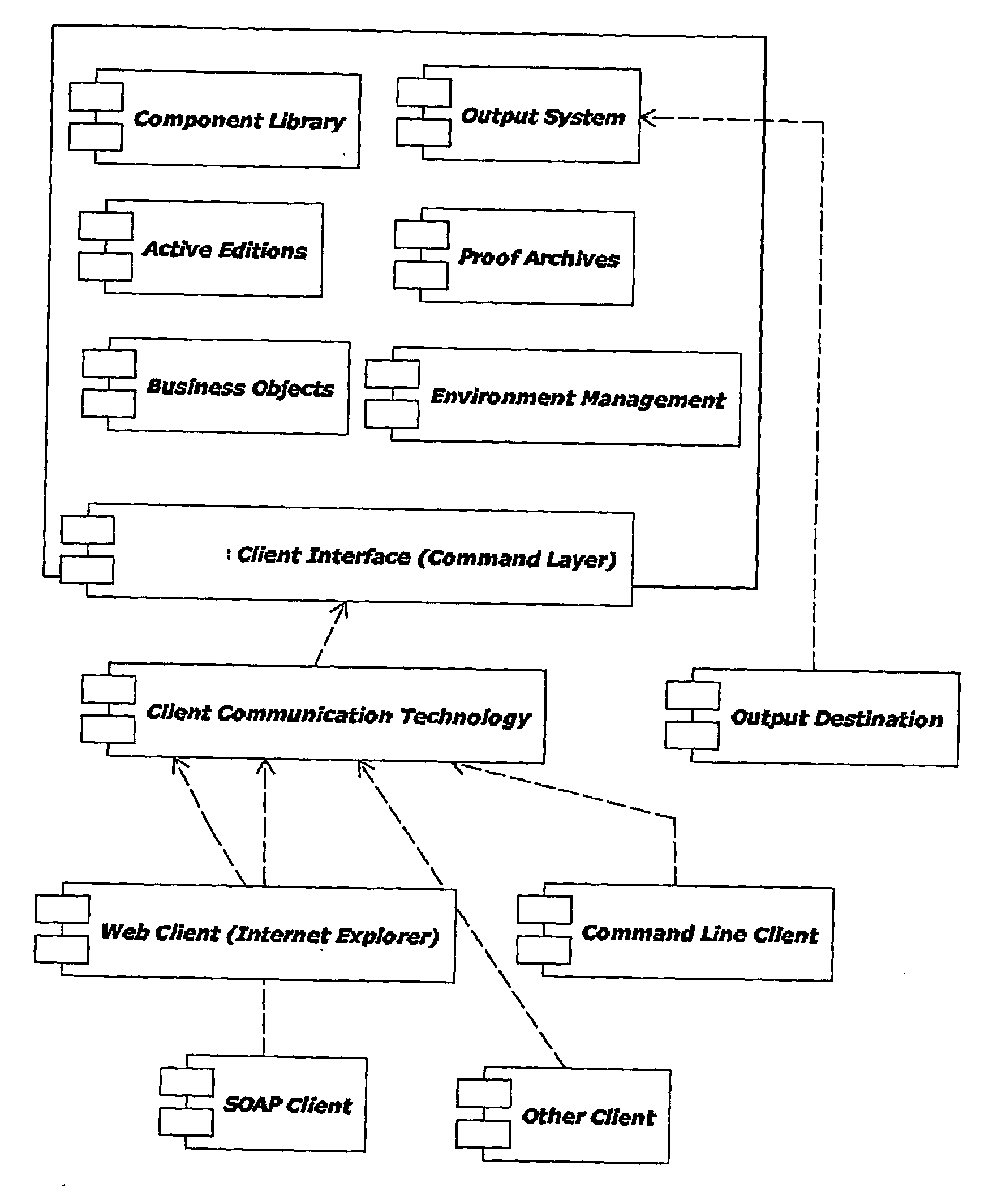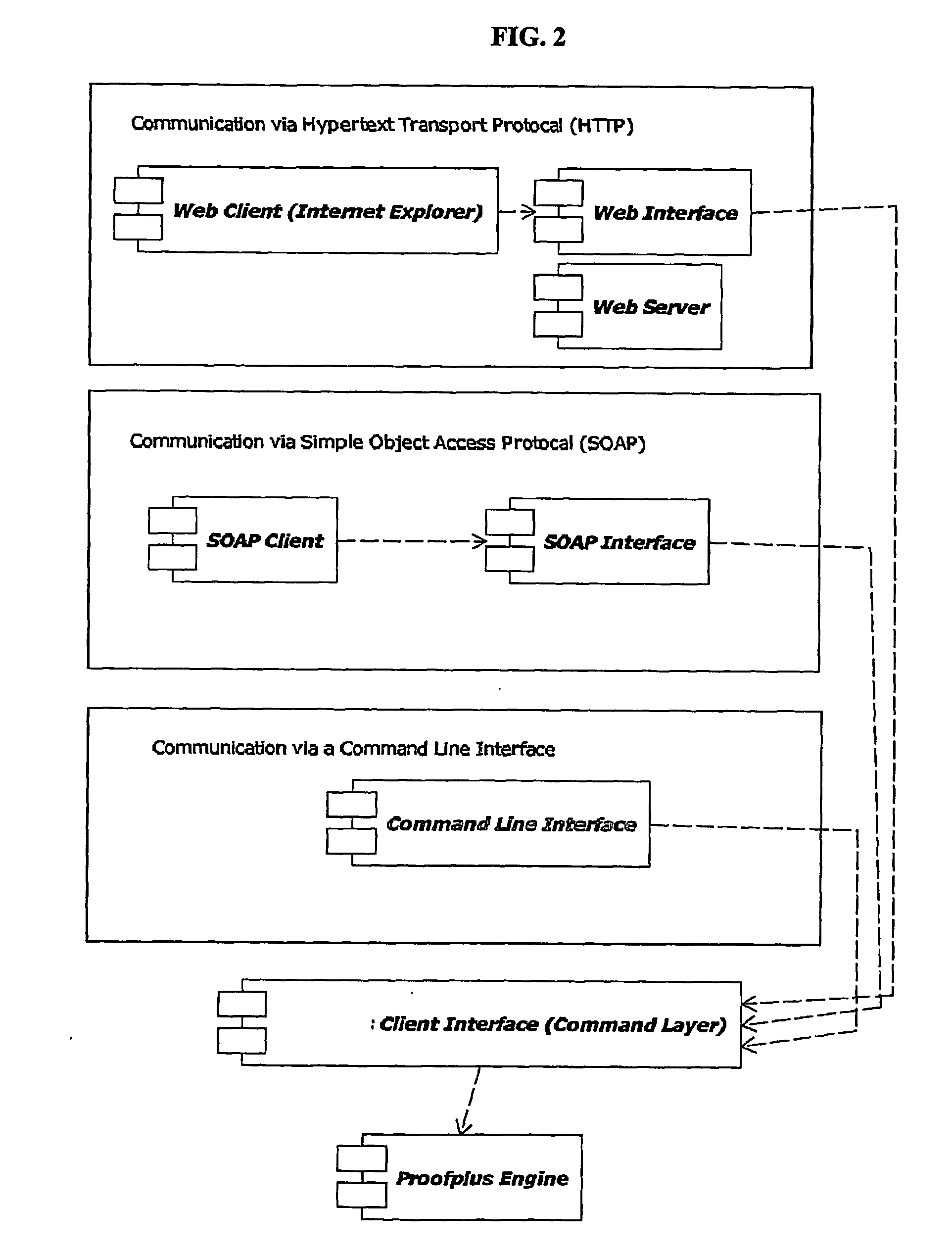Automated Publishing System That Facilitates Collaborative Editing And Accountability Through Virtual Document Architecture
a document architecture and automatic publishing technology, applied in the field of collaborative preparation, composition and publishing of documents, can solve the problems of fragmented publishing, no efficient way to handle fragmented publishing, and no currency guarantee, so as to reduce the time to publication, reduce errors, and improve the effect of system administration
- Summary
- Abstract
- Description
- Claims
- Application Information
AI Technical Summary
Benefits of technology
Problems solved by technology
Method used
Image
Examples
Embodiment Construction
[0067]The invention assembles and generates virtual editions of documents rather than a serial document file with embedded content. A document is a bounded collection of content intended to communicate a set of information to a specific set of recipients, whether internal or external to an organization. In this definition, documents are not transitory, day-to-day communications among colleagues, such as letters and memos. Documents in accordance with an embodiment of the invention are presented in some formalized layout or format amenable to wider distribution. Documents can contain, but are not limited to, titling and other identifiers, expository text, graphic illustrations, charts, tables, internal references such as tables of contents and indexes, and other references such as footnotes or URL links.
[0068]The system utilizes the concept of a structured document. A structured document can be described in terms of the order of its component parts, hierarchical relationships, and ty...
PUM
 Login to View More
Login to View More Abstract
Description
Claims
Application Information
 Login to View More
Login to View More - R&D
- Intellectual Property
- Life Sciences
- Materials
- Tech Scout
- Unparalleled Data Quality
- Higher Quality Content
- 60% Fewer Hallucinations
Browse by: Latest US Patents, China's latest patents, Technical Efficacy Thesaurus, Application Domain, Technology Topic, Popular Technical Reports.
© 2025 PatSnap. All rights reserved.Legal|Privacy policy|Modern Slavery Act Transparency Statement|Sitemap|About US| Contact US: help@patsnap.com



